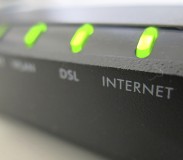
The Future of Cell Phone Expenses

Since mobile phones were introduced in the 1990s, the price of postpaid monthly services has increased drastically. With the introduction of smartphones and data plans in the twenty-first century, average monthly mobile phone bills grew. In addition, demand for smartphones, which offer users internet access, has increased. Today, there are approximately 182.6 million smartphone users in the United States – over half of all Americans. Use of smartphones is projected to increase, with an estimated 220 million smartphone users by 2018. So what about the average monthly cost of paying for a smartphone? Will it increase as demand for smartphones increases? Read on to find out.
History
In 2001, the average household in the United States spent approximately $201 per month on cell phone bills. That figure has increased more than four fold in recent years, with average household spending on cell phone bills at $913 per month in 2013. Although subscription programs and promotions have recently been introduced to help lower the monthly cost of owning a smartphone, the industry relies on the amount of data customers use. With the continuous introduction of new applications for mobile phones, users are consuming more and more data on a monthly basis, allowing telecommunication companies to get away with charging them more.
Predictions
It was once thought that competition between mobile phone companies would drive the cost of services down. The Federal Communications Commission (FCC) aims to have at least four major cell phone service providers in the United States, with the hope that it will be a good thing for consumers. Of course, if recent years can serve as proof, the cost of using a cell phone is only increasing. The truth is that carriers are hardly competing to offer low-priced plans. While the monthly base price of a plan remains relatively stable, cell phone users continue to consume more data, which is where the telecommunications companies make their money. Unless this model changes or the FCC enacts legislation to limit the amount that carriers can charge for data, the monthly cost of owning a cell phone will continue to increase.
Revenue
 In accordance with the rising cost per postpaid mobile phone user, cell phone carriers are garnering increasing profits. Wireless carriers saw a 2.2% increase in profit per customer in the final quarter of 2013. Profit per customer has risen at least five dollars since 2010, with current statistics sitting at approximately $62 per postpaid customer. It’s unlikely that mobile phone companies will cut back on the potential for profit per customer in the near future, unless they are required to by the FCC.
In accordance with the rising cost per postpaid mobile phone user, cell phone carriers are garnering increasing profits. Wireless carriers saw a 2.2% increase in profit per customer in the final quarter of 2013. Profit per customer has risen at least five dollars since 2010, with current statistics sitting at approximately $62 per postpaid customer. It’s unlikely that mobile phone companies will cut back on the potential for profit per customer in the near future, unless they are required to by the FCC.
Quick Wrap Up
The cost of owning a cell phone will continue to increase in the years to come. If the past is any indicator, the amount the average household spends on cell phone payments will only increase. Back in 2001, when smartphones weren’t around, the average household spent less than one-quarter of the monthly amount they now spend.







